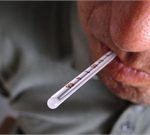
Even in the midst of rising rates of suicide and substance abuse, nearly 117 million Americans live in what is known as “health professional shortage areas.” Put another way, only 27% of mental health needs in those areas are being met, according to the Health Resources and Services Administration (HRSA). More than 6,300 additional providers would be needed to erase the gap. How did things get so bad? The dearth of mental and behavioral health professionals — psychiatrists, psychologists, marriage and family therapists and others — is not a recent development. It has slowly snowballed since the 1980s when state psychiatric hospitals were deinstitutionalized. “This has been a problem that’s been building over decades and decades, and now we’re at a crisis point,” said Angela Beck, director of the Behavioral Health Workforce Research Center at the University of Michigan, in Ann Arbor. Primary care physicians provide around half of all behavioral health services in the United States, Beck noted. “Unmet need,” the metric that HRSA uses, refers to the more serious or complex issues that require a trained mental health provider. “We’ve got demand going up,” Beck said, “but we don’t have a pipeline or a supply that’s expanding to keep pace.” Help wanted The Association of American Medical Colleges (AAMC) projects a shortage of 3,400 psychiatrists by 2032. “We have an opioid crisis, we… read on >


















